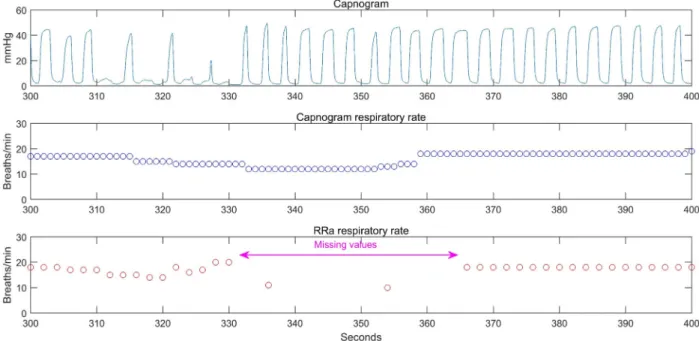http://www.jdapm.org 195
Letter to the Editor pISSN 2383-9309❚eISSN 2383-9317
J Dent Anesth Pain Med 2018;18(3):195-196❚https://doi.org/10.17245/jdapm.2018.18.3.195
Letter to the Editor – Response to: The effect of dental scaling noise during intravenous sedation on acoustic respiration rate
Steven J. Barker
Anesthesia, The University of Arizona Health Sciences, Tucson, Arizona, United States Medical Affairs, Masimo Corporation Ringgold standard institution, Irvine, California, United States
Keywords: Acoustic Respiration Rate; Respiratory Rate; Scaler; Sedation.
This is an Open Access article distributed under the terms of the Creative Commons Attribution Non-Commercial License (http://creativecommons.org/licenses/by-nc/4.0/) which permits unrestricted non-commercial use, distribution, and reproduction in any medium, provided the original work is properly cited.
Received: June 22, 2018•Revised: June 25, 2018•Accepted: June 25, 2018
Corresponding Author: Steven J Barker, The University of Arizona Health Sciences – Anesthesia, 1501 N. Campbell Avenue Tucson Arizona 85724, United States, Chief Science Officer, Masimo Corporation, Irvine, California, United States
Tel: +1-520 904-3781 Fax: +1-949 297-7394 E-mail: sjbarker@masimo.com Copyrightⓒ 2018 Journal of Dental Anesthesia and Pain Medicine
Dear Editor:
Masimo is the manufacturer of the RAM respiratory acoustic monitoring device, which can continuously measure the acoustic respiratory rate, RRaⓇ. This was the subject of a recent study by Kim et al [1], published in your journal. In this retrospective study, the investigators evaluated whether noise from an ultrasonic dental scaler affects the accuracy of RRa during intravenous sedation.
The study used prerecorded data from a previous study on patient-controlled sedation, and reanalyzed these data to extract results on respiratory rate measurement by two methods. There is no “gold standard” for respiratory rate in this study. It is simply a comparison of two inde- pendent methods of respiratory rate measurement during acoustic dental scaling: RRa and nasal cannula capno- graphy.
In the study, Kim et al used the correlation coefficient (R) to compare two methods of measuring the same variable (respiration rate). This is not the appropriate statistic for this comparison. The values of R will depend
on the respiratory rate range covered by the data, and hence are not helpful. The most useful statistics in a methods-comparison study are the Bland-Altman “Bias”
(mean difference of methods) and “Precision” (standard deviation of differences).
In addition, only 49 of 60 total subjects were selected for the data analysis. Eleven subjects were eliminated because they exhibited “oral respiration” (mouth brea- thing). This is a serious limitation, because mouth breathing is known to cause large errors in respiratory rate measured by nasal cannula capnography [2,3]. By eliminating these eleven subjects, the investigators are ignoring the most serious error from one of their two respiratory rate methods.
The capnograph waveform shown in Fig. 1 clearly shows missing breaths at times between 310 and 330 seconds, yet the plot of RR measured by capnography shows no change during that period. Investigators also observed a RRa dropout rate of 8% during the period of sedation before the acoustic scaling commenced. This
Steven J Barker
196 J Dent Anesth Pain Med 2018 June; 18(3): 195-196
Fig. 1. Stored capnogram wave was confirmed, and the numbers of respiratory rates with capnogram and acoustic respiration rate (RRa) were extracted at 2-s intervals. Values not recorded on RRa were defined as missing values.
finding is inconsistent with the published literature [4, 5].
We are concerned that the results presented in this paper may be misinterpreted, especially considering the bias introduced by removing all data from mouth breathing subjects, which removes the largest respiratory rate error of nasal capnography.
We look forward to continuing to work with investi- gators across the patient care continuum to evaluate how RRa monitoring can improve clinical outcomes.
Respectfully yours, S.J. Barker, PhD, MD
Professor Emeritus, University of Arizona Chief Science Officer, Masimo Corporation
AUTHOR ORCIDs
Steven J Barker: http://orcid.org/
REFERENCES
1. Kim JH, Chi SI, Kim HJ, Seo K. The effect of dental
scaling noise during intravenous sedation on acoustic respiration rate (RRa). J Dent Anesth Pain Med 2018;
18: 97-103.
2. Teng WN, Ting CK, Wang YT, Hou MC, Tsou MY, Chiang H, et al. Oral capnography is more effective than nasal capnography during sedative upper gastro- intestinal endoscopy. J Clin Monit Comput 2018; 32:
321-6.
3. Oberg B, Waldau T, Larsen VH. The effect of nasal oxygen flow and catheter position on the accuracy of end-tidal carbon dioxide measurements by a pharyn- geal catheter in unintubated, spontaneously breathing subjects. Anaesthesia 1995; 50: 695-8.
4. Ramsay MA, Usman M, Lagow E, Mendoza M, Untalan E, De Vol E. The accuracy, precision and reliability of measuring ventilatory rate and detecting ventilatory pause by rainbow acoustic monitoring and capnometry. Anesth Analg 2013; 117: 69-75.
5. Ouchi K, Fujiwara S, Sugiyama K. Acoustic method respiratory rate monitoring is useful in patients under intravenous anesthesia. J Clin Monit Comput 2017; 31:
59-65.
